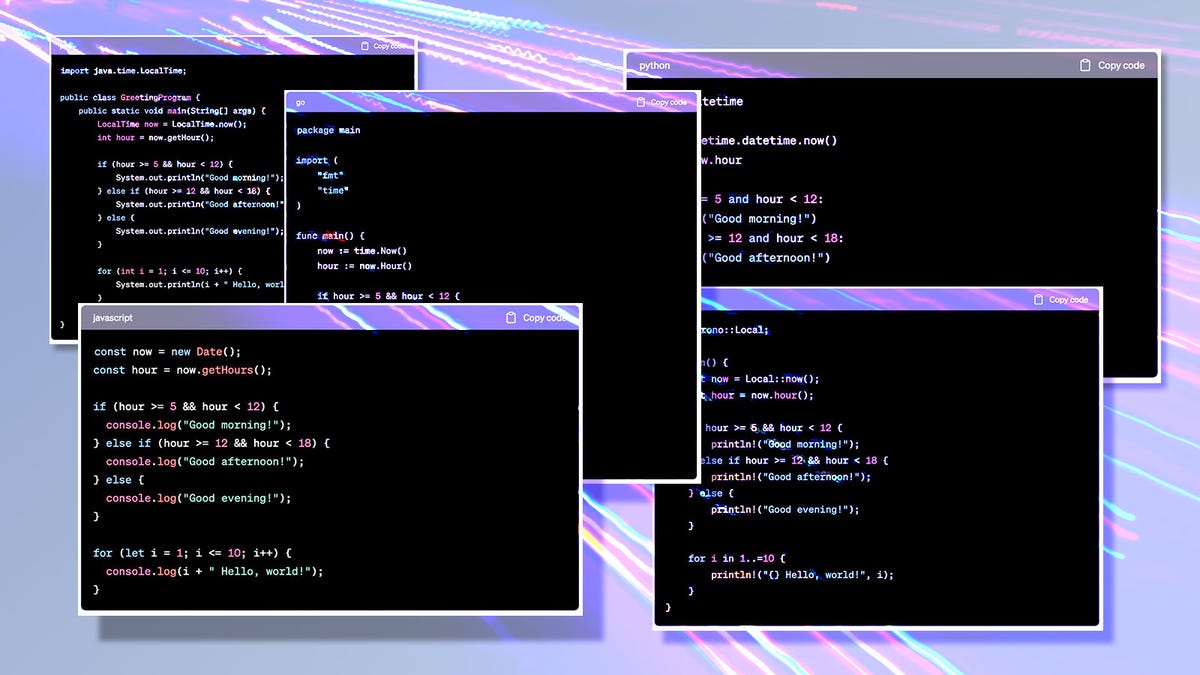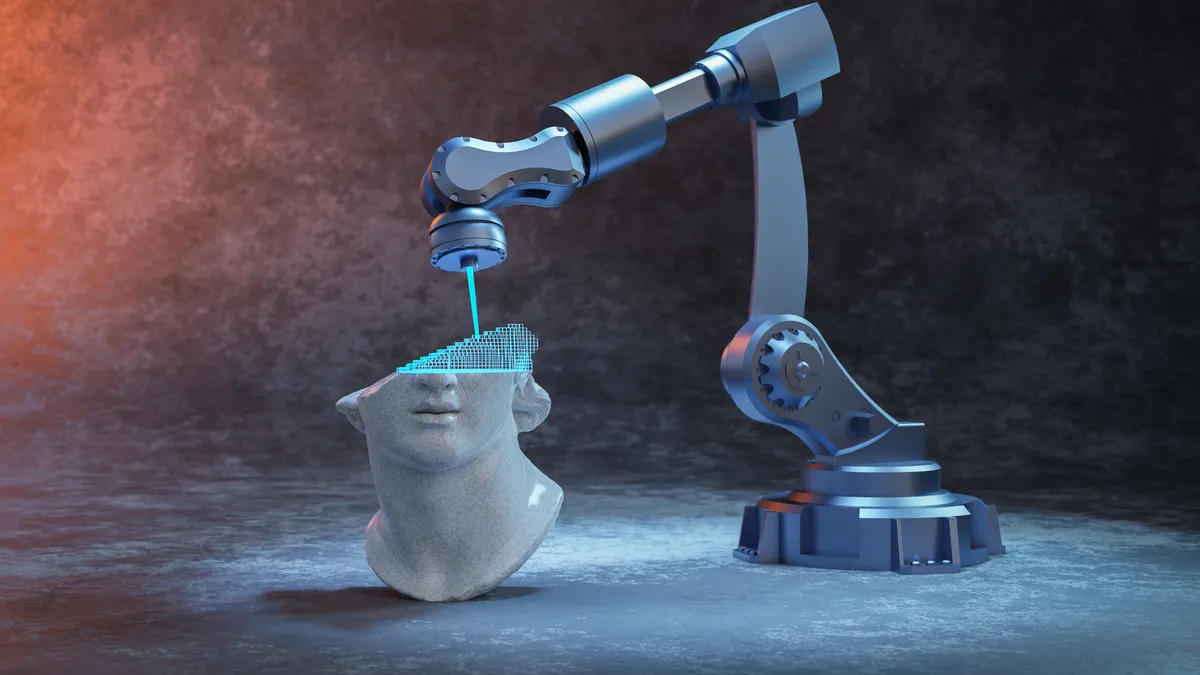Gemini와 ChatGPT를 활용한 확률적 경사 하강법 탐색
구글의 제미니는 '왜?'라는 질문에 직면할 때 출력을 미세 조정하는데 능숙하지만, 오픈AI의 챗GPT-4는 막혀있습니다.
“`html
젬미니와 GPT-4에게 깊은 학습 인공지능을 설명해달라고 요청했더니 젬미니가 쉽게 이겼어요.
가끔은 무언가를 검토하는 가장 좋은 방법은 이미 약간 알고 있는 것들과 연관시켜 보는 것입니다. 또는 적어도 알고 있다고 생각하는 것들과 연관시켜 보는 것이요.
이 정신으로 최근에 Google의 젬미니 챗봇(이전에는 바드였음)과 OpenAI의 ChatGPT-4를 비교하는 시험을 진행했습니다. 목표는 현재의 인공지능 시스템인 ChatGPT와 젬미니와 같은 현대의 중요한 구성요소인 확률적 경사 하강(SGD)의 개념을 탐구하는 것이었습니다. 더 재미있게 만들기 위해이 어려운 과학 개념을 비유를 사용하여 설명하기로 결정했어요—이는 두 프로그램 모두에게 훌륭한 시험이 될 겁니다!
SGD 해석: 개미의 최저점 탐색
먼저 확률적 경사 하강의 간단한 설명부터 시작해 봅시다. SGD는 신경망을 훈련하는 데 사용되는 수학적 방법입니다. 이것은 훈련 과정 중에 프로그램을 개선하는 데 도움이 되는 “학습 규칙”입니다.
SGD를 더 잘 이해하기 위해 신경망이 출력물을 생성한다고 상상해 보십시오. 훈련 중에 이 출력물을 알려진 좋은 출력물과 비교하여 신경망을 조정하여 둘 사이의 차이를 최소화합니다. 이러한 변경은 가능한 해결책 공간에서 반란적이거나 확률적으로 이루어지며 그래디언트라고하는 가능한 해결책 영역 내에서 발생합니다. 목표는 그래디언트에서 가장 낮은 지점을 찾는 것이며 이곳은 실제와 원하는 출력 사이의 차이가 최소화되는 지점입니다.
이 상황에 대한 고전적인 비유는 언덕을 내려가기 위해 길을 찾는 개미입니다. 개미는 주변의 한정된 영역만 볼 수 있기 때문에 땅을 무작위로 건너가다가 때로는 오르막길을 오르게 됩니다. 그러나 시간이 지나면 개미는 지속적으로 경로를 선택하여 결국 바닥으로 내려갑니다.
젬미니의 보물 사냥 대 화상의 흐린 하이킹
젬미니와 ChatGPT에게 확률적 경사 하강의 비유나 암시를 제공하라고 요청했을 때 두 프로그램 모두 준수할만한 응답을 제공했습니다. 젬미니는 이것을 계곡 바닥에 있는 보물을 찾는 것으로 비유했습니다. 보물은 원하는 출력과 실제 출력 사이의 차이를 좁히는 것을 나타냅니다—매우 값진 비유네요!
반면에 ChatGPT는 SGD를 산이 있는 짙은 안개 속을 내려가는 하이커에 비유했습니다. 이 하이커는 멀리 보이지 않았는데 개미도 전체 지형을 인식할 수 없는 것처럼요. 이 비유는 SGD의 확률성 핵심을 잡아내면서도 젬미니의 보물 사냥만큼 직관적이지 않을 수 있습니다.
응답 분석: 탐구적인 젬미니가 승리
젬미니와 ChatGPT는 처음에 만족스러운 설명을 제공했습니다. 그러나 더 깊이 파고들게 함으로써 더 많은 탐구적인 질문을 던져 보니, 젬미니가 최고의 성적을 거뒀어요.
젬미니에게 왜 그들의 비유 속 보물이 계곡의 바닥에 있는지 물어보았습니다. 놀랍게도, 젬미니는 기관 보안 측면에서 보물을 높은 곳에 두는 것이 더 합리적일 수도 있다고 고백했습니다. 그리고 고고학적 유적지 중간의 비밀의 방에 보물이 숨겨져 있는 대안적인 비유를 제시했는데, 직관적으로 더 맞는 해결책이었습니다. “왜?” 라는 질문을 흡수하고 비유를 조정하여 나타내는 젬미니의 능력이 나를 감동시켰어요.
그에 반해 ChatGPT는 비슷한 질문에 직면했을 때 해결책을 발전시키지 못했습니다. 비유를 개선하는 대신, 왜 비유가 그렇게 구성되었는지에 대한 긴 설명을 제공하지만 더 나은 해결책을 제시하지 못했습니다. ChatGPT의 응답은 정확했지만, 비유를 조정하여 더 효과적인 결과를 내는 데 실패했습니다.
도전의 승자: 젬미니가 빛을 발하다
이 실험으로 젬미니가 과업을 완수하고 요구에 따라 솔루션을 생성하는 면에서 ChatGPT를 능가했음을 결론짓을 수 있습니다. SGD가 깊은 학습 인공지능에서 중요한 역할을 하며, 젬미니가 응답을 개선하며 진행하는 능력은 이 도전에서 우위를 점하는 데 도움이 되었습니다.
마지막으로, 젬미니와 ChatGPT와 같은 AI 챗봇을 활용하여 SGD와 같은 복잡한 개념을 탐색하면 흥미로운 통찰력을 얻을 수 있습니다. 이들이 비유를 사용하여 이러한 추상적인 개념을 이해하고 설명하는 능력은 기술적 지식과 일상적 이해 사이의 간극을 좁히는 흥미로운 가능성을 열어 줍니다.
이 기사를 좋아하셨나요? 소셜 미디어에서 친구들과 공유하십시오! 그리고 AI 챗봇과의 경험 및 생각을 아래 댓글로 남겨 주세요.
Q&A: AI 챗봇과 SGD에 대해 더 많은 통찰력을 밝혀보는 시간
“““html
Q: What are some other applications of SGD in AI besides neural network training?
A: Stochastic gradient descent is widely used in various machine learning algorithms for optimizing models and minimizing errors. It finds applications in computer vision, natural language processing, recommendation systems, and much more. The ability to navigate complex solution spaces efficiently makes SGD a valuable tool in training and optimizing AI models.
Q: Can SGD get trapped in local minima during neural network training?
A: Yes, SGD can sometimes get stuck in local minima, where the algorithm finds a suboptimal solution instead of the global minimum. However, this is not a significant concern in practice because neural networks are often highly complex, and the presence of local minima is relatively rare. Additionally, other techniques like momentum and adaptive learning rates can help prevent SGD from getting trapped.
Q: How can AI chatbots like Gemini and ChatGPT contribute to enhancing user experiences in various industries?
A: AI chatbots have the potential to revolutionize customer support, virtual assistants, and even content creation. By leveraging advanced natural language processing and machine learning techniques, chatbots can understand user queries, provide personalized recommendations, and engage in meaningful conversations. As these systems improve, we may see chatbots becoming indispensable in industries like e-commerce, healthcare, and finance.
Q: What are the challenges in developing AI systems that can understand and generate human-like analogies?
A: Teaching AI systems to understand and create analogies that resonate with humans is no easy task. It requires a deep understanding of context, cultural references, and linguistic nuances. AI models need both large amounts of data to learn from and sophisticated algorithms capable of capturing the subtleties of analogical reasoning. Research in this field is ongoing, and we can expect significant advancements as AI continues to evolve.
Q: Can AI chatbots like Gemini and ChatGPT be trained to generate analogies for other complex concepts?
A: Yes! AI chatbots have vast potential for explaining challenging concepts using metaphors and analogies. By training them on a wide range of topics and human-authored analogies, they can develop the ability to create novel and accurate analogical explanations. This could greatly enhance the accessibility of technical knowledge and make it easier for people to grasp complex ideas.
References
- Google’s Gemini chatbot vs. OpenAI’s ChatGPT-4
- OpenAI resolves ChatGPT data leak issue
- Zuckerberg on the path to artificial general intelligence
- Comparison of ChatGPT, Microsoft Copilot, and Gemini
- The essence of deep learning
- GPT-4’s decreasing performance over time
“`






